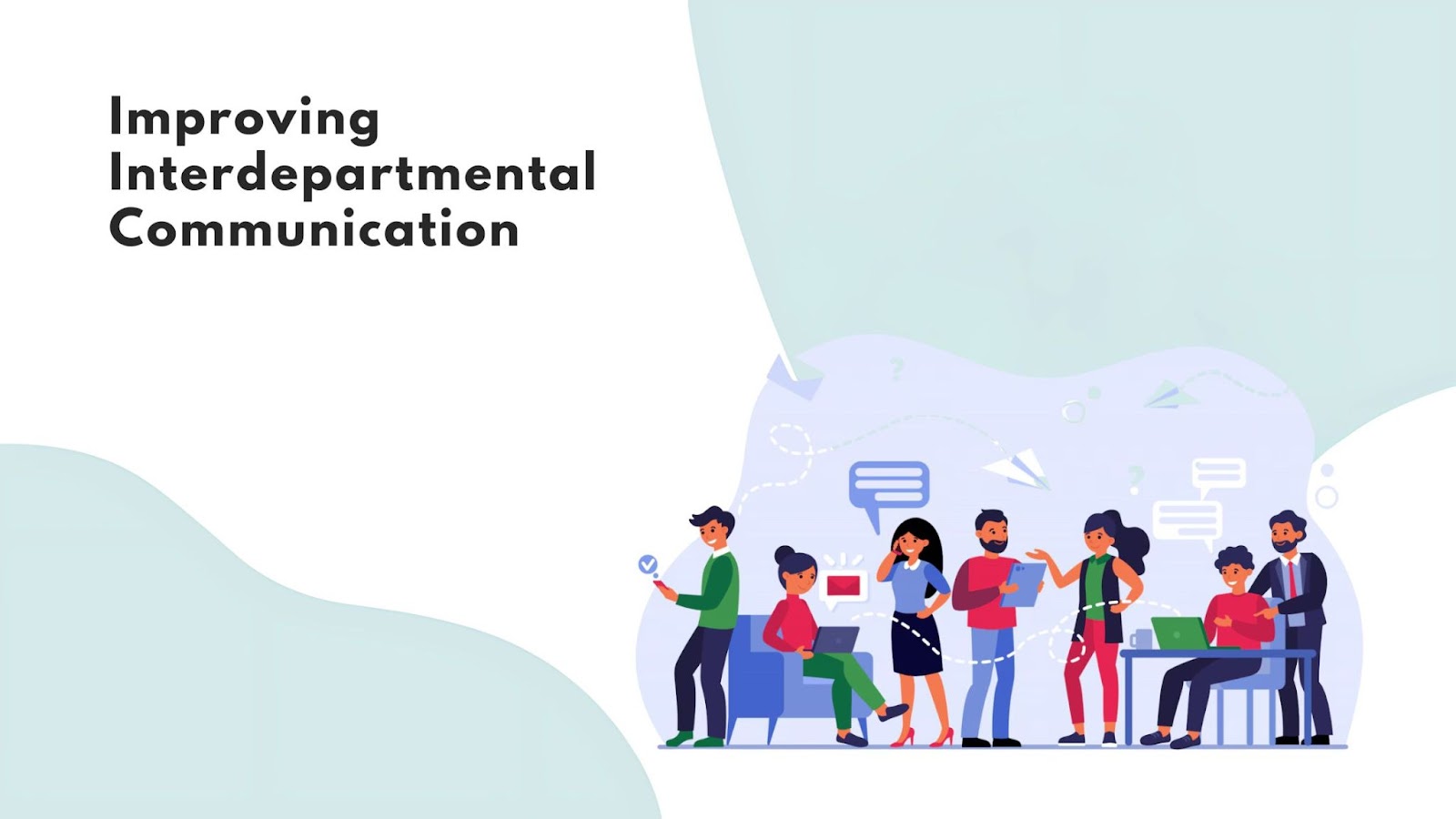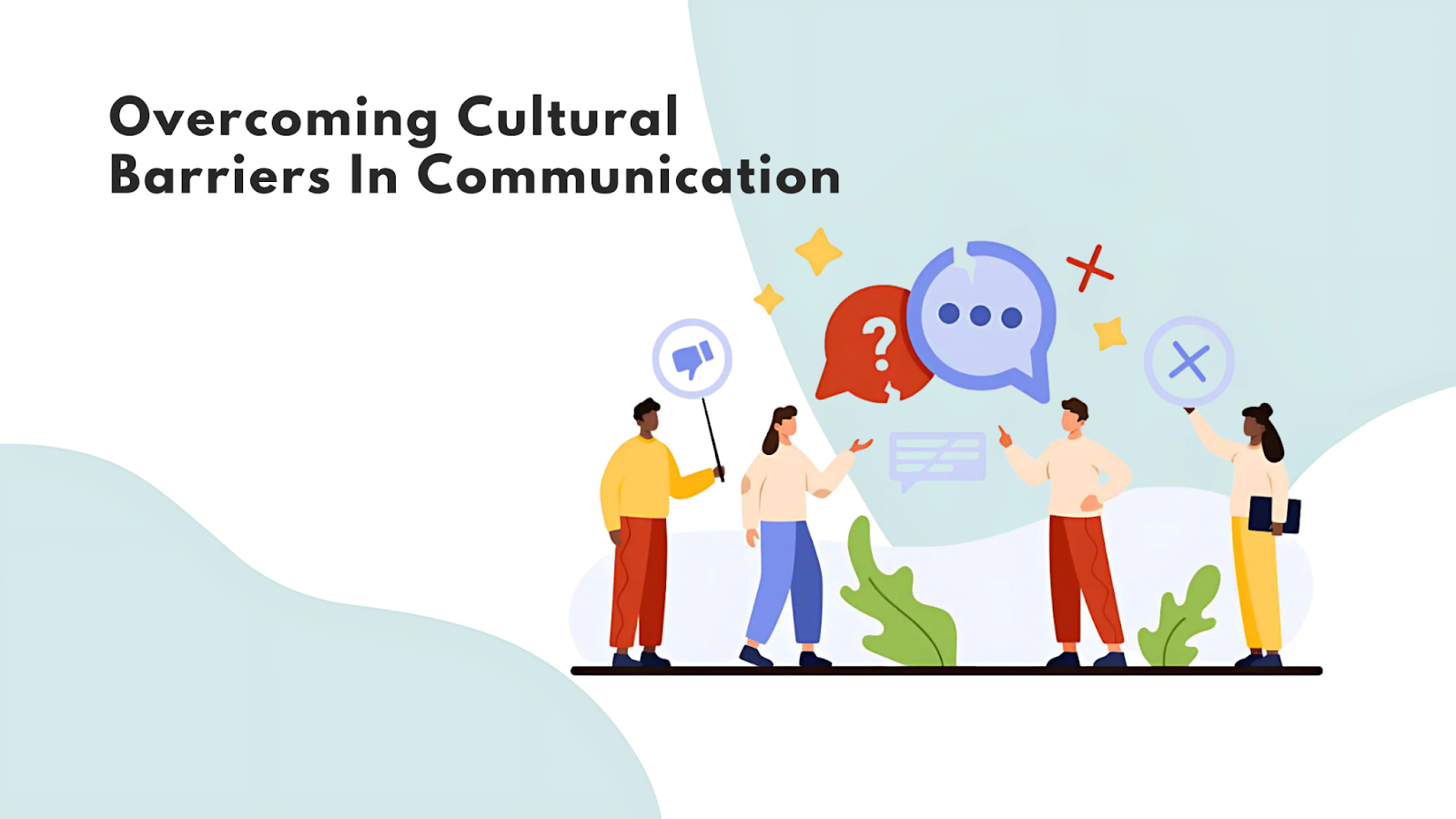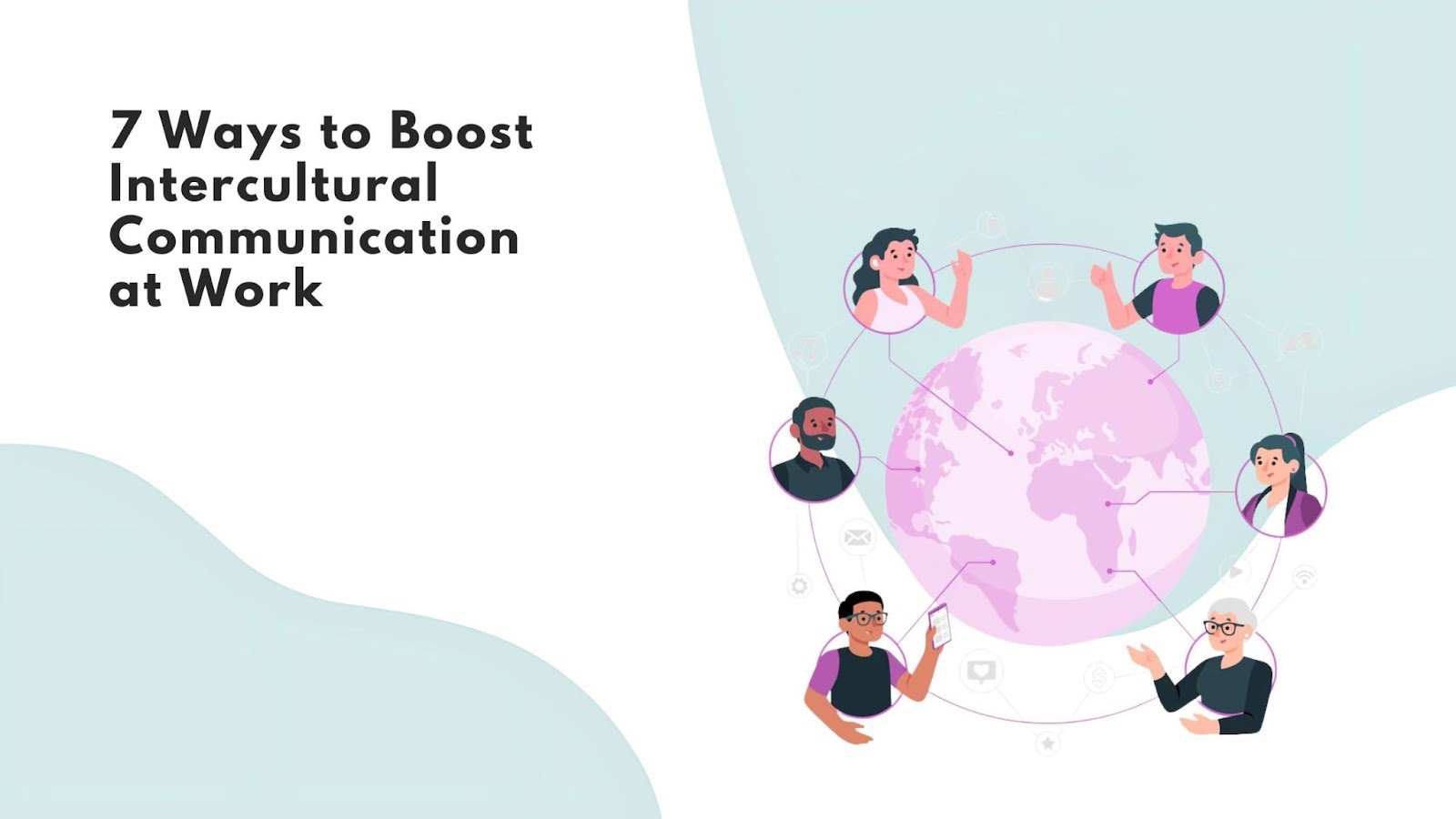
Improving Cross-Cultural Communication And Understanding In The Workplace


Multicultural teams are now commonplace. One minute you’re in a Zoom call with a colleague in New York, and the next you’re brainstorming with a partner in Tokyo. It’s exciting, but also challenging.
Have you ever paused to think how much can be lost in translation? Sometimes “yes” doesn’t actually mean yes, and “no” may feel too harsh in one culture but perfectly normal in another.
Research highlights just how real this challenge is. In a Forbes survey across 90 countries, 78% respondents said open discussions were among their toughest cultural hurdles. These numbers show that the smallest words and gestures can carry oversized implications.
That’s exactly what we’ll explore in this blog. From understanding the basics of cross-cultural communication to practical strategies, we’ll walk you through how to build stronger, more inclusive workplace connections. Let’s get started!
Quick Look:
- Cross-cultural communication directly impacts teamwork, customer relationships, and global business success.
- Understanding its importance helps companies build inclusive, respectful, and growth-focused workplaces.
- Core elements include language, non-verbal cues, and different communication styles across cultures.
- Improving communication requires self-reflection, research, active listening, and clear organizational standards.
- Avoid common mistakes like slang, assumptions, or jokes that may offend across different cultures.
What Is Cross-Cultural Communication?
Cross-cultural understanding refers to how people from different cultural, social, or geographical backgrounds exchange information. It involves both verbal and nonverbal cues, and even small differences can create major misunderstandings if not addressed thoughtfully.
In the workplace, cross-cultural communication becomes especially important when employees come from diverse countries, age groups, or educational backgrounds. Acknowledging these differences helps reduce misunderstandings and builds a more inclusive work environment.
Here are some areas where differences often surface:
- Language and accents: Regional accents, dialects, or different languages can affect clarity.
- Cultural practices: Greeting styles, gestures, or formality levels vary across regions.
- Work culture: Every company develops its own set of norms and expectations.
- Time zones: Remote teams often struggle to align schedules across continents.
- Generational views: Each age group may have unique expectations and approaches to work.
Also Read: Workplace Communication Barriers Examples And How to Overcome Them
How Does Cross-Cultural Communication Impact Business?
As workplaces become increasingly global, cross-cultural communication has shifted from being optional to being essential. Without it, collaboration can collapse, projects stall, and client relationships weaken. Below are some ways it affects your business:
- Employee productivity: Misunderstandings between culturally diverse teams slow projects and create costly inefficiencies.
- Time zone coordination: Distributed teams can face delays without effective communication strategies that account for location differences.
- Customer relationships: Miscommunication with customers from diverse backgrounds can harm brand trust and increase churn rates.
- Marketing and branding: A poorly translated campaign may confuse or even offend global audiences, weakening your reputation.
Importance Of Cross-Cultural Communication:
When cross-cultural communication is managed well, it improves collaboration, strengthens customer trust, and supports inclusive work environments. It also drives innovation by combining diverse perspectives that help businesses uncover growth opportunities.
Next up, let’s break down the essential elements that shape how communication across cultures works in practice.
Text your team in any language. With Udext’s employee SMS platform, your messages translate into 100+ languages instantly.
{{see-udext="https://www.udext.com/symbols"}}
What Are The 3 Elements Of Cross-Cultural Communication?
At its core, cross-cultural communication rests on three main elements that shape how people connect. Understanding these elements helps you recognize where breakdowns may occur and how to address them:
1. Language and Expression
Words carry weight, and in global teams, language differences are the biggest source of confusion. Mispronunciations, jargon, or lack of fluency can distort meaning and slow down collaboration. Even basic conversational skills in another language can make interactions smoother.
2. Nonverbal Cues and Gestures
Body language, gestures, and tone often say more than words. However, they don’t carry the same meaning everywhere. For instance, eye contact signals confidence in some cultures but may be seen as disrespectful in others. Awareness of these nuances prevents misinterpretations.
3. Social and Cultural Norms
Every culture has unspoken rules about communication styles that shape how people speak and behave. High-context cultures, like Japan, rely on indirect hints and shared understanding, while other low-context cultures may prefer clear, direct speech.
Now that you understand the key elements, let’s talk about how you can improve cross-cultural communication skills.
Also Read: Business Texting Etiquette: Rules and Tips for Professional Communication
How Can You Improve Cross-Cultural Communication?
Improving cross-cultural communication requires both personal effort and organizational support. By focusing on the right strategies, you can create a workplace where diversity enhances collaboration instead of creating barriers:
Review Your Own Culture
Self-awareness is the first step toward better communication. Understanding your cultural habits helps you approach others with an open and respectful mindset.
- Identify how your background shapes communication preferences; your tone, gestures, or even how you handle conflict.
- Recognize that your approach may not be universal. What seems polite to you may be perceived differently elsewhere.
- Be open to new workplace perspectives and practices to adapt effectively.
Example: If you come from a culture where direct feedback is expected, pause before criticizing a colleague from a culture that values indirect communication. Instead, frame your feedback with context and empathy.
Learn About Other Cultures
Taking time to research cultures you interact with shows respect and helps avoid unnecessary misunderstandings in daily business interactions.
- Study greetings, gestures, and traditions relevant to your colleagues by observing or asking about customary practices.
- Understand cultural views on time, space, and authority by learn expectations for punctuality, personal space, and hierarchy.
- Focus on the groups you work with most often to ensure your efforts have an immediate, practical impact.
Example: Before a video call with a Japanese client, you learn that formal greetings and slight bowing (even virtually) show respect. This will help you start the meeting on the right note.
Ask Instead of Assuming
Assumptions can create stereotypes and barriers. Asking thoughtful questions builds trust, shows curiosity, and encourages open, respectful communication.
- Clarify customs or practices directly with colleagues by asking politely to avoid missteps based on incorrect assumptions.
- Encourage teammates to share their cultural preferences through open discussion so everyone feels valued and understood.
- Replace assumptions with genuine curiosity and dialogue by active listening and follow up on explanations.
Example: Instead of assuming a colleague is familiar with certain industry jargon, ask if they’d like clarification.
Set Clear Guidelines for Communication
Establishing standards reduces misunderstandings caused by language barriers or cultural differences. Clear guidelines help everyone feel heard and respected.
- Define expectations for tone, clarity, and professionalism by sharing written norms or style guides.
- Provide language support or translation tools when needed to reduce miscommunication and frustration among multilingual teams.
- Encourage consistent communication practices across teams to build trust and predictability in daily collaboration.
Example: A multinational team agrees to use plain English and avoid idioms in emails, ensuring everyone understands instructions correctly.
Invest in Training and Development
Cultural differences sometimes lead to conflict. Training equips teams with the skills to manage disagreements constructively and maintain healthy relationships.
- Provide workshops on negotiation and conflict resolution to help teams resolve disputes without damaging relationships.
- Teach methods for handling emotions in tense discussions by encouraging self-awareness and emotional regulation.
- Encourage solutions that satisfy all parties involved through inclusive problem-solving exercises to promote mutual respect.
Example: A workshop on conflict resolution helps a U.S. and Indian team navigate differing approaches to deadlines without creating tension.
Respect Different Work Approaches
Not every culture tackles tasks the same way. Respecting these differences allows creativity to flourish and strengthens problem-solving within your team.
- Acknowledge that multiple methods can achieve the same outcome to encourage innovation.
- Value efficiency and creativity equally by rewarding both task-focused and idea-driven contributions.
- Support flexibility in task management and execution through autonomy in scheduling, helping you improve productivity.
Example: While some employees prefer detailed weekly planning, others work better with flexible, goal-focused tasks. Allow both approaches to coexist to maximize productivity.
Recognize Religious and National Holidays
Acknowledging cultural holidays fosters inclusion and prevents scheduling conflicts. It demonstrates awareness of employees’ personal and cultural commitments.
- Adjust deadlines around important observances by planning project timelines with holidays in mind.
- Avoid major meetings during significant holidays with the help of calendar checks to ensure full participation.
- Show genuine interest in colleagues’ cultural traditions and ask questions about celebrations or customs.
Example: Adjusting project deadlines around major holidays, like Christmas, ensures employees can celebrate without work conflicts.
Build Collaboration with Feedback
Collaboration thrives when feedback is encouraged and team bonding is prioritized. Both help bridge cultural gaps and strengthen workplace relationships.
- Promote open and constructive feedback sessions by creating safe spaces for sharing.
- Organize activities that highlight cultural diversity, like hosting cultural showcases or discussions, for better team cohesion.
- Create opportunities for employees to share personal experiences through storytelling and reflection sessions. This strengthens interpersonal bonds.
Example: Monthly team huddles where employees share personal cultural stories to help break down barriers and build empathy across the team.
Stop assumptions and miscommunication from slowing collaboration. With Udext, employees can ask, respond, and share feedback instantly across languages.
Improvement starts with awareness. Let’s look at some common causes of failure.
Also Read: 7 Tips to Improve Intercultural Communication in the Workplace
Common Causes Of Cultural Communication Failures
Cross-cultural communication can break down for many reasons. Even small cultural differences can cause misunderstandings, disrupt collaboration, and slow progress. Recognizing the common barriers is the first step to overcoming them.
- Bias Toward Language or Accent
When people judge others based on fluency, accent, or dialect, it creates unnecessary barriers. This kind of bias can harm confidence, making employees hesitant to contribute valuable ideas in meetings or discussions.
- Lack of Cultural Awareness
Unintentional insensitivity toward customs or behaviors can fracture relationships. A polite gesture in one culture may feel disrespectful in another, creating tension and unnecessary workplace conflict.
- Struggles with Time Zones
Distributed teams often struggle with time differences. Scheduling across time zones, managing overlapping hours, or expecting instant responses without flexibility can frustrate employees and affect productivity.
- Narrow Views on “Right” Practices
When teams assume their way is the only effective method, collaboration suffers. These judgments often stem from cultural conditioning and ignore alternative approaches that might produce equal or better results.
Also Read: Importance of Employee Communication in Workplace Relationships
Further Cross-Cultural Communication Examples
The best way to understand cultural communication issues is to see them in action. Below are practical scenarios that show how misinterpretations can shape workplace dynamics:
These examples highlight that even small actions can ripple into larger communication gaps, which brings us to the importance of avoiding common mistakes.
Also Read: How to Avoid Texting Miscommunication Within Teams
Mistakes To Avoid In Cross-Cultural Communication
Even well-meaning professionals can unintentionally make errors when interacting across cultures. To ensure smoother interactions across diverse teams, here are some pitfalls to avoid:
- Skipping Clarification: Don’t assume messages are understood. Ask for summaries or rephrases to ensure accuracy and shared meaning.
- Relying on Idioms or Slang: Local phrases confuse non-native speakers and can delay understanding, even among English-speaking colleagues.
- Using Humor Carelessly: Jokes don’t translate well. What’s funny to you may offend or confuse others.
- Forcing Yes-or-No Responses: Instead of closed questions, ask open-ended ones to invite detailed answers and deeper insights.
- Taking a Hands-Off Approach: Hoping communication will sort itself out ignores cultural complexities. Intentional engagement and awareness are essential.
- Overcorrecting Bias: Pressure-heavy anti-prejudice campaigns may increase tension, rather than reduce bias in the workplace.
Streamline Cross-Cultural Communication With Udext
If you’re ready to take cross-cultural communication from theory to action, Udext is here to help. It’s an intuitive employee text messaging platform designed to keep teams informed, engaged, and connected, no matter where they are.
Key Features of Udext
- Multi-Language Messaging: Break language barriers with automatic translations into over 100 languages.
- Two-Way Messaging: Resolve issues quickly and strengthen trust by enabling direct employee responses.
- Mass Texting: Share company updates, safety alerts, and policy changes instantly with the entire team.
- Automated Scheduling: Plan recurring reminders, shift schedules, or birthday greetings without manual effort.
- Surveys & Feedback: Collect honest feedback through quick text-based surveys that employees are more likely to complete.
Closing Thoughts
Improving cross-cultural communication helps you create a workplace where every employee feels respected, included, and valued. By addressing barriers like language gaps, cultural insensitivity, and misinterpretations, HR leaders can build stronger teams and foster collaboration. When businesses invest in better communication practices, they see higher productivity, greater employee engagement, and stronger customer relationships.
If you’re ready to take the next step, Udext makes it simple. As an employee SMS platform, it helps you send two-way texts and translate messages into 100+ languages. With features like mass texting and automation, Udext ensures no employee feels left out, no matter where they are or what language they speak.
{{improve-comm="https://www.udext.com/symbols"}}
Need to improve your internal comms? Take a look at Udext!
"Out of the box, Udext has everything you need to elevate your internal communication. It’s incredibly easy to set up and use, with a straightforward interface and great customer support"
John D.
Director of HR at Apex Manufacturing


.svg)






